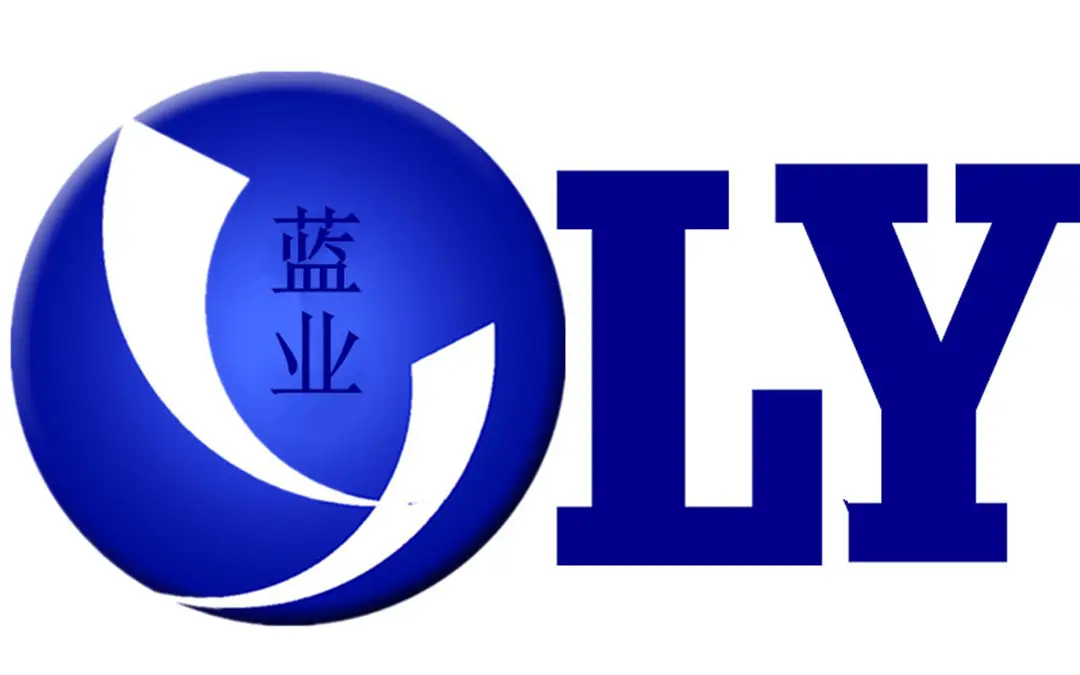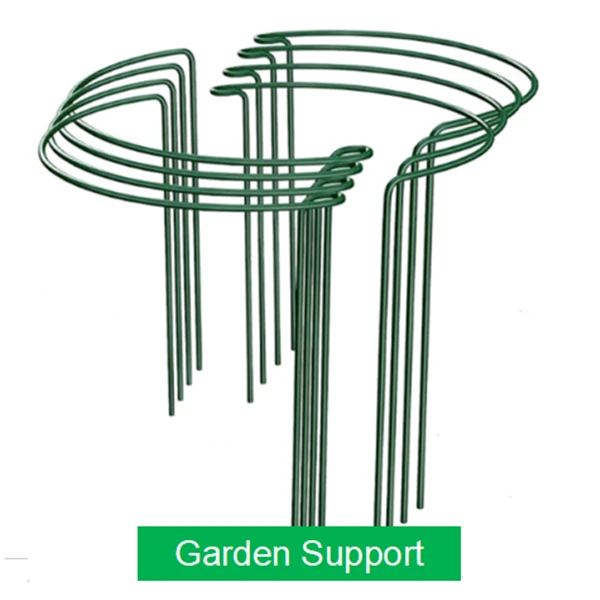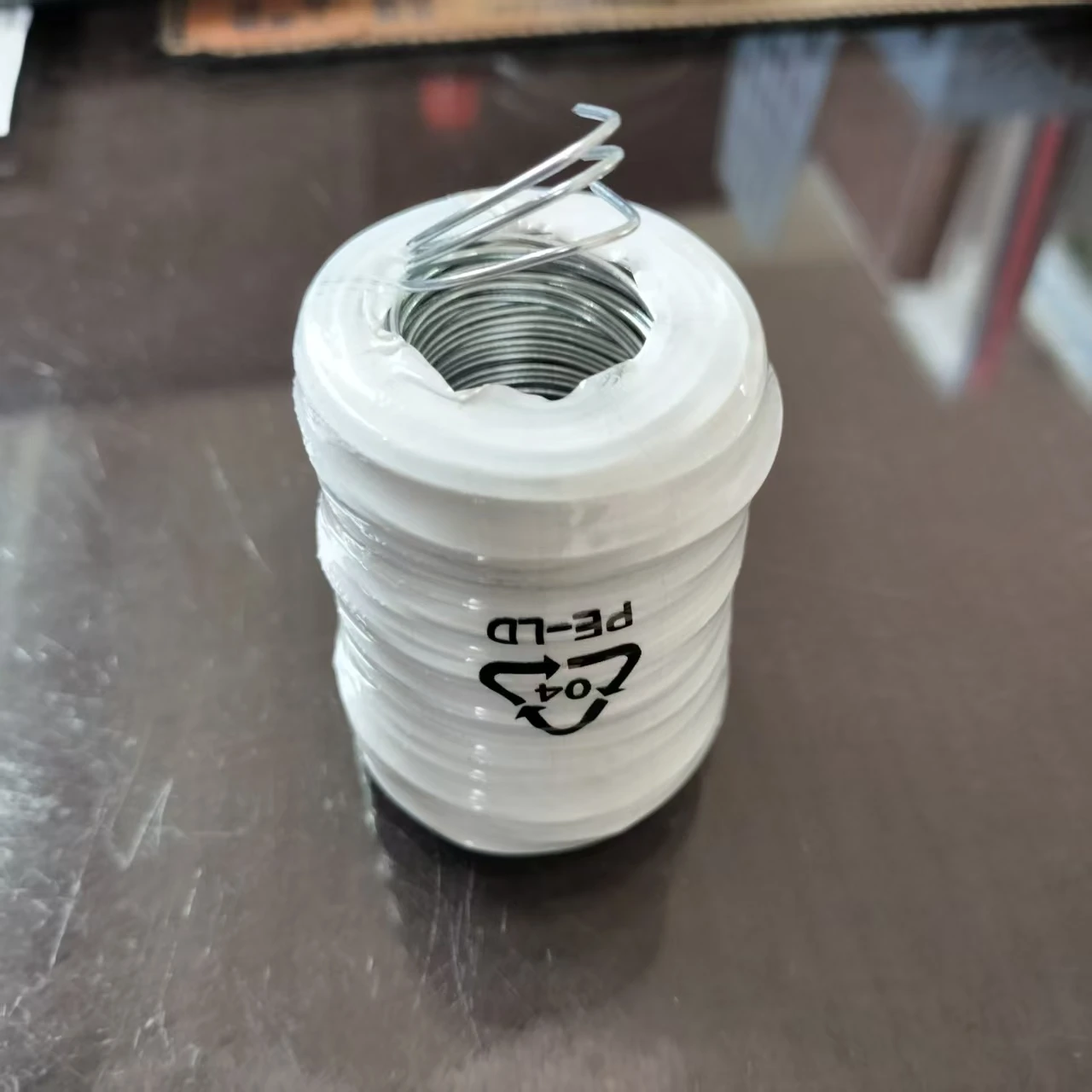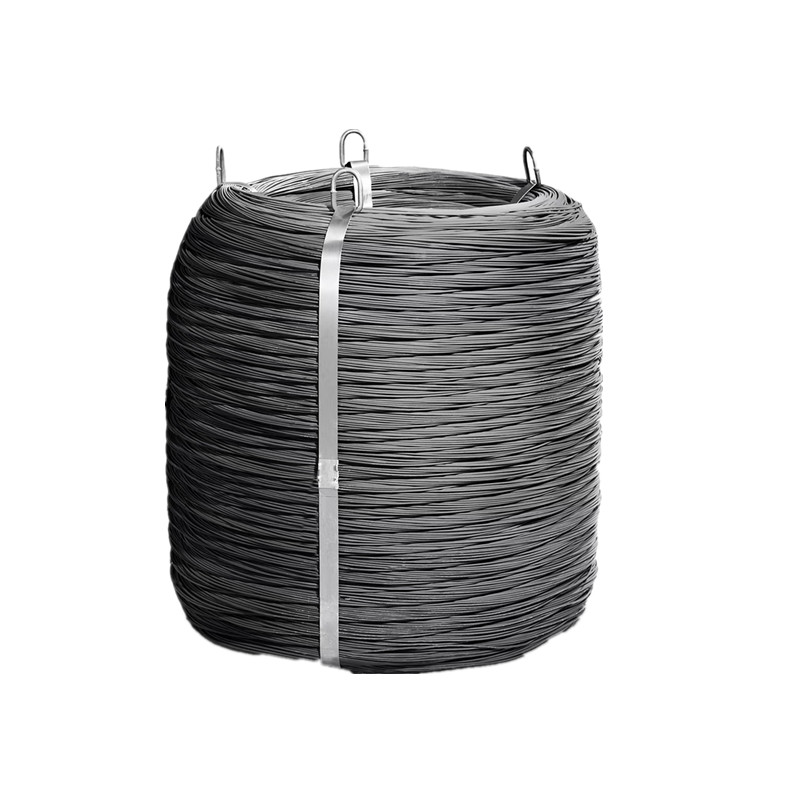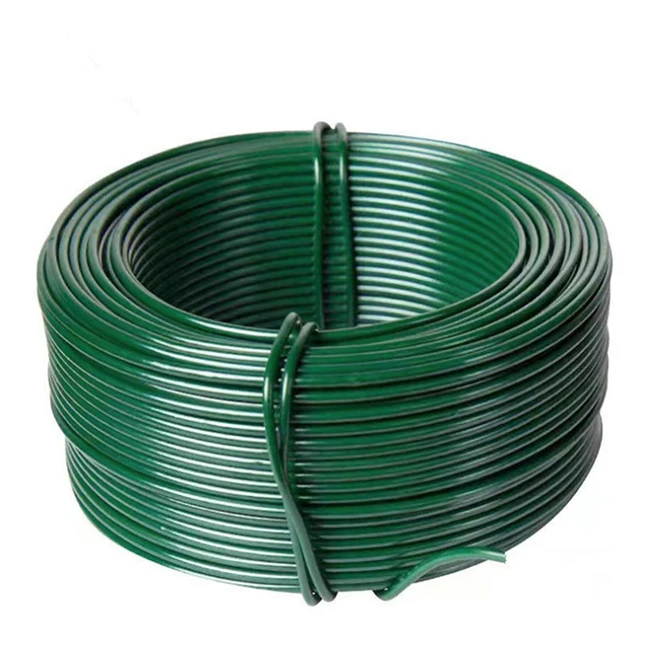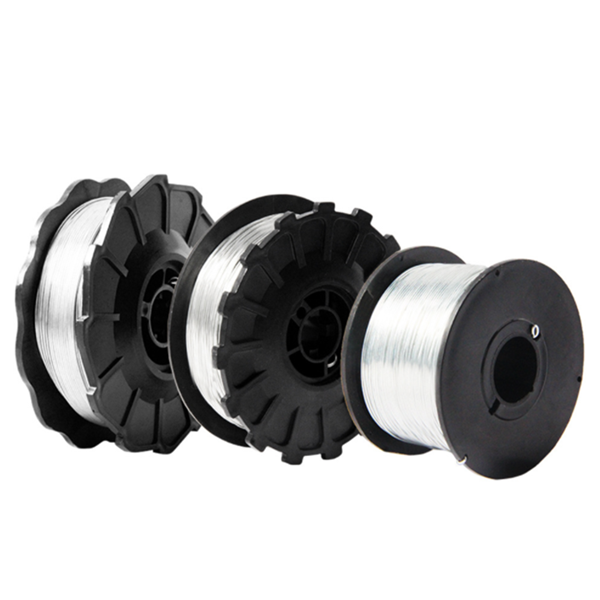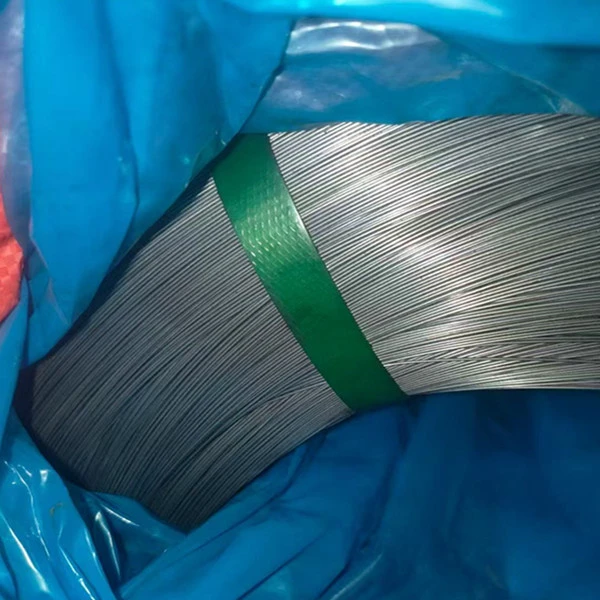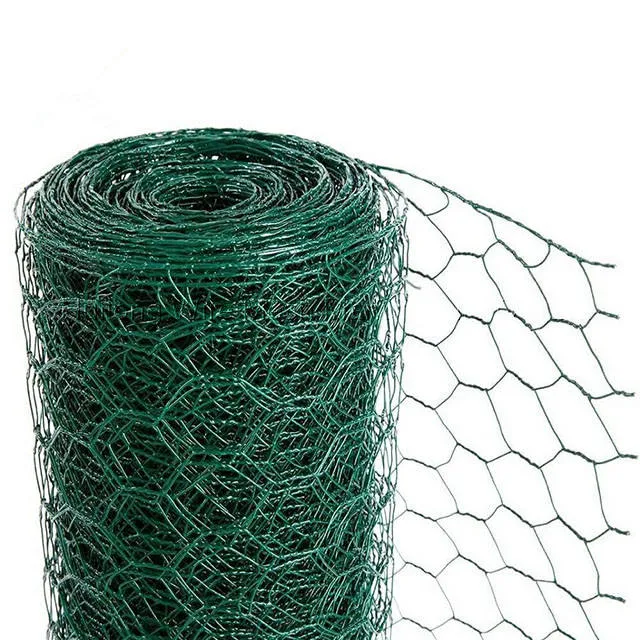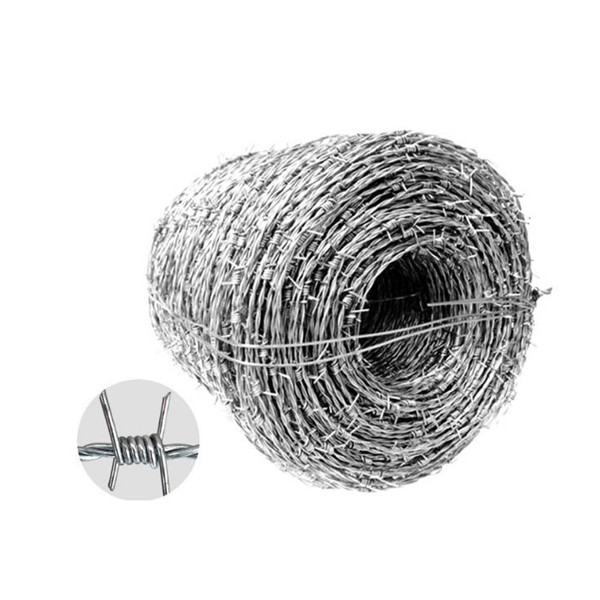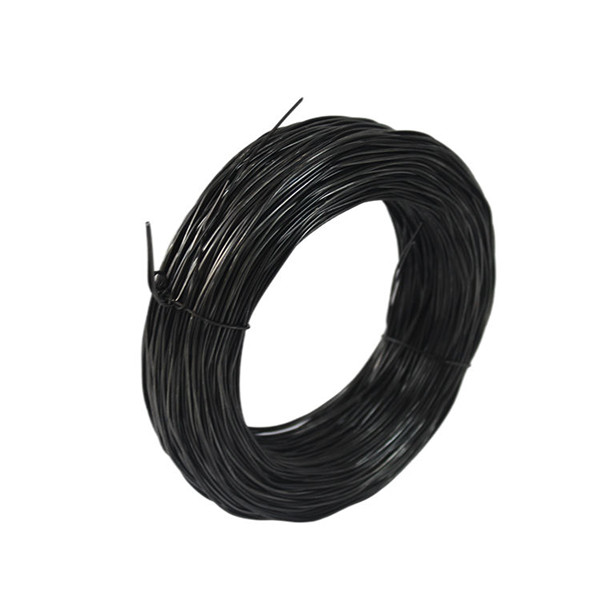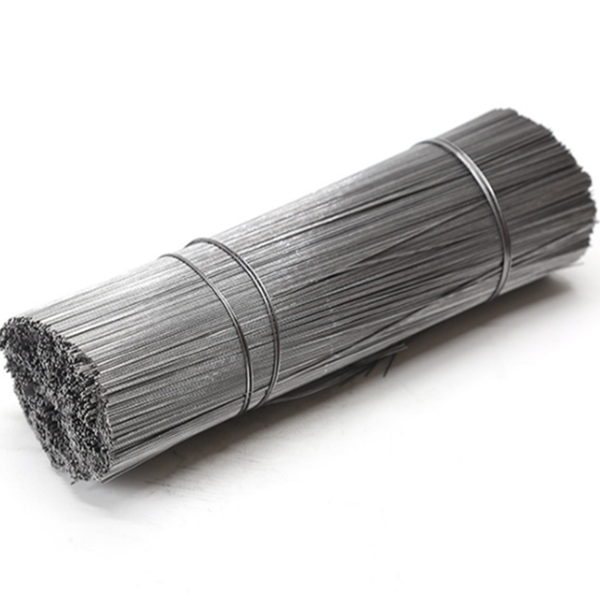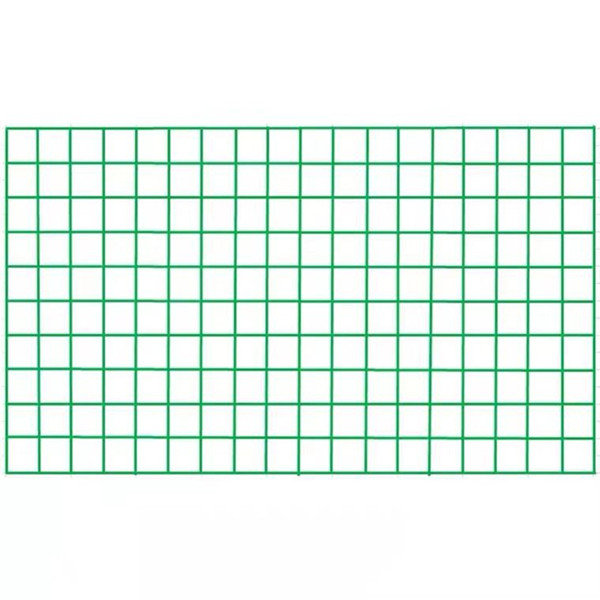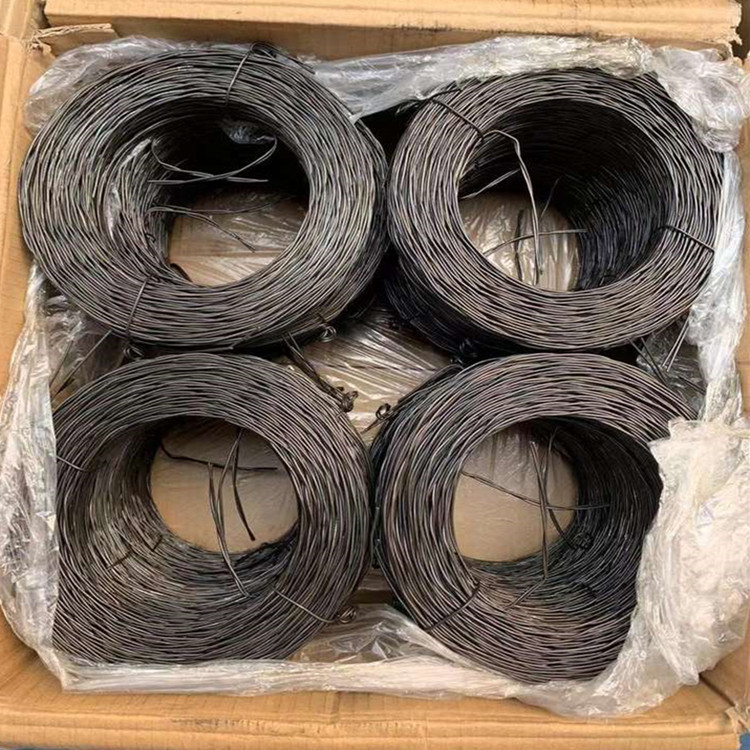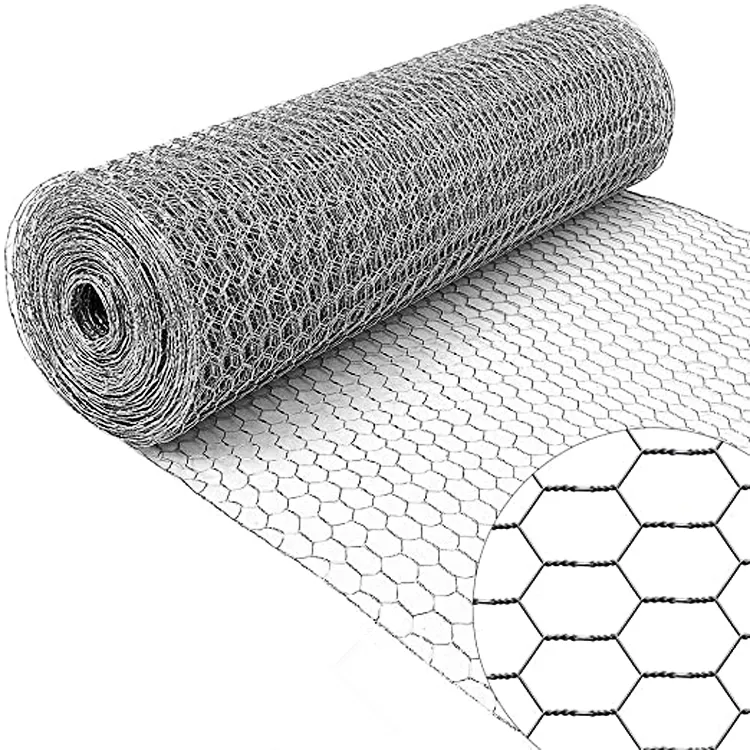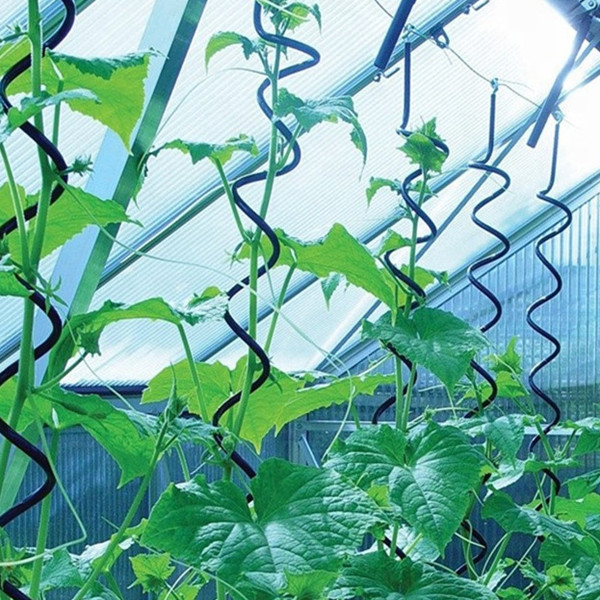Introduction to U Shaped Binding Wire: A Critical Component in Industrial Applications
In the vast landscape of industrial consumables, the u shaped wire stands out as a highly specialized and indispensable product. Known widely as U Type Tie Wire or U Shape Cutting Wire, this product plays a pivotal role across numerous sectors requiring robust, efficient, and reliable binding solutions. Its distinctive 'U' shape, formed through precision cutting and bending, is specifically engineered to streamline the tying process, offering significant advantages over conventional straight wires. This form factor allows for quick application, reducing labor costs and increasing operational efficiency, making it a preferred choice for professionals seeking optimized workflow and enhanced structural integrity in their projects.
The applications of this specialized binding solution are diverse, ranging from securing rebar in concrete construction to bundling agricultural products and organizing industrial components. Its utility is derived from a combination of material science, precise manufacturing, and thoughtful design, all aimed at delivering superior performance under various environmental and mechanical stresses. This article delves into the intricate details of U Shaped Binding Wire, exploring its manufacturing process, technical specifications, diverse applications, and the strategic advantages it offers to B2B clients.
Industry Trends in Binding and Tying Solutions
The global market for industrial binding and tying solutions is experiencing dynamic shifts, driven by advancements in construction methodologies, agricultural practices, and manufacturing processes. Key trends indicate a growing demand for materials that offer enhanced durability, ease of use, and sustainability. Automation in construction and packaging industries, for instance, necessitates binding wires that are consistently dimensioned and easily integrated into automated tying machines, pushing manufacturers to maintain strict quality control and dimensional precision.
Furthermore, there's a significant focus on sustainable and corrosion-resistant materials. Environmental regulations and the need for long-lifecycle infrastructure projects are driving the adoption of galvanized steel tie wire and PVC coated tie wire, which offer superior resistance to environmental degradation. The increasing complexity of supply chains also highlights the importance of reliable packaging and bundling, where specialized solutions like u shaped wire play a crucial role in securing goods for transit and storage. This evolving landscape underscores the continuous innovation required in the production of essential components like U Type Tie Wire to meet stringent modern industrial demands.
Manufacturing Process of U Shaped Wire
The production of U Shaped Binding Wire is a sophisticated, multi-stage process that prioritizes material integrity, dimensional accuracy, and optimal mechanical properties. Adherence to international standards such as ISO 9001 for quality management is paramount at every step to ensure the final product meets the rigorous demands of industrial applications.
Process Flow:
- 1. Wire Rod Selection: The foundation of high-quality U Type Tie Wire begins with the selection of premium wire rod, typically low-carbon steel (e.g., Q195, SAE1008). Key parameters evaluated include chemical composition, surface quality, and mechanical properties to ensure suitability for subsequent drawing processes.
- 2. Wire Drawing: The selected wire rod undergoes a series of cold drawing processes. This reduces the wire's diameter to the desired gauge while simultaneously increasing its tensile strength and improving surface finish. Multiple drawing passes are often required, with inter-stage annealing to maintain ductility and prevent work hardening.
- 3. Annealing (for Black Annealed Wire): For black annealed wire, the drawn wire is subjected to a controlled thermal treatment in an inert atmosphere. This process softens the wire, making it highly malleable and easy to work with, crucial for manual tying applications.
- 4. Galvanization (for Galvanized Wire): For galvanized u shaped wire, the drawn wire is passed through a molten zinc bath. This hot-dip galvanizing process creates a robust, sacrificial zinc coating that provides superior corrosion resistance, extending the product's service life, especially in outdoor or corrosive environments.
- 5. PVC Coating (for PVC Coated Wire): For PVC coated tie wire, a layer of polyvinyl chloride is extruded onto the wire. This coating offers enhanced corrosion protection, insulation, and often, color coding for specific applications, alongside a smoother, safer handling experience.
- 6. Precision Cutting and Bending: The processed wire is then fed into an automated cutting and bending machine. This CNC-controlled equipment precisely cuts the wire to the specified length and forms the distinctive 'U' shape with high accuracy and consistency. This stage is critical for ensuring the uniformity and ease of use of the final product.
- 7. Quality Control and Testing: Throughout the process, stringent quality control checks are performed. This includes testing for wire diameter, length, tensile strength, elongation, coating thickness (for galvanized/PVC wire), and bend radius. Adherence to standards like ASTM A641 (for galvanized wire) and ISO 9001 ensures product reliability and performance.
- 8. Packaging: Finished U Shaped Binding Wire is typically bundled in specific quantities (e.g., 1000, 2000, 5000 pieces per bundle) and then packaged in waterproof material to protect against moisture and damage during transit and storage.
The service life of a high-quality galvanized U Type Tie Wire can exceed 10-15 years in typical outdoor conditions, while black annealed versions are suitable for applications where corrosion is not a primary concern or where they will be embedded (e.g., in concrete). Target industries include construction, agriculture, petrochemical, metallurgy, and water supply & drainage, where the demand for reliable binding solutions is constant. Advantages in these scenarios include energy saving through faster installation times and superior corrosion resistance for critical infrastructure.
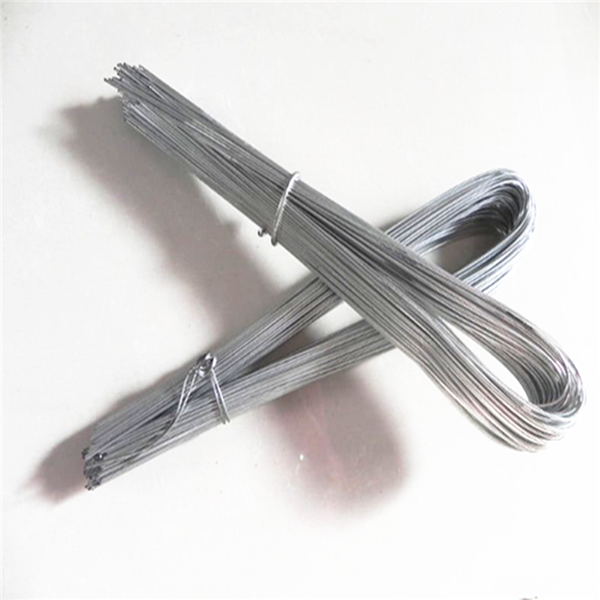
Precision manufacturing ensures the consistent quality of U Type Tie Wire.
Technical Specifications and Parameters
Understanding the precise technical specifications of u shaped wire is crucial for B2B procurement, ensuring compatibility with specific applications and regulatory compliance. Key parameters include wire gauge (diameter), length, material composition, tensile strength, and surface treatment.
Typical Product Specifications for U Shaped Binding Wire
| Parameter | Specification Range | Standard / Remark |
|---|---|---|
| Material | Low carbon steel wire (Q195, SAE1008) | Black Annealed, Electro Galvanized, Hot-Dip Galvanized, PVC Coated |
| Wire Gauge (Diameter) | 16 Gauge (1.65 mm) to 22 Gauge (0.71 mm) | Commonly available, other gauges customizable |
| Cut Length | 200 mm to 600 mm (8 inches to 24 inches) | Lengths vary based on application (e.g., rebar, baling) |
| Tensile Strength | 350-550 N/mm² (for black annealed) | Higher for galvanized/harder wires |
| Elongation Rate | Typically >15% (for black annealed) | Indicates ductility and ease of tying |
| Zinc Coating Weight | 15-200 g/m² (for galvanized) | Per ASTM A641, varies by application environment |
| Packaging | 1000, 2000, 2500, 5000 pieces per bundle | Custom bundling available |
These specifications are crucial for architects, engineers, and procurement managers in ensuring the right material is selected for the job, providing the necessary strength, corrosion resistance, and workability. The precise control over these parameters allows for optimal performance in diverse environments, from arid construction sites to humid agricultural settings.

Diverse gauges and finishes are available for cuttings u type binding wire.
Key Advantages of U Shaped Wire
The strategic design of the U Type Binding Wire offers several compelling advantages that contribute to enhanced operational efficiency, cost-effectiveness, and structural integrity across various industrial applications:
- Optimized Efficiency: The pre-bent 'U' shape significantly reduces tying time compared to traditional straight binding wire. Workers can quickly hook and twist the wire, which is particularly beneficial in large-scale construction projects, leading to substantial labor savings and accelerated project timelines. This direct impact on productivity translates to considerable energy saving in terms of man-hours and operational resources.
- Superior Durability and Security: Manufactured from high-quality steel, often with various coatings, u shaped wire offers excellent tensile strength and resistance to breakage. When properly applied, it creates a secure, lasting tie that can withstand significant stress, crucial for maintaining the structural integrity of rebar cages or bale formations.
- Enhanced Corrosion Resistance: Options such as hot-dip galvanized and PVC coated tie wire provide exceptional corrosion resistance. This is vital for outdoor applications, marine environments, or areas exposed to chemicals, significantly extending the lifespan of the tied components and reducing maintenance requirements. This attribute is a direct advantage in industries like petrochemical and water supply & drainage.
- Versatility Across Applications: From securing rebar and fencing to baling agricultural products and bundling industrial components, the versatility of U Type Wire is unmatched. Its adaptability to various tying tools and methods makes it a go-to solution for diverse needs.
- Cost-Effectiveness: While the initial per-piece cost might be slightly higher than bulk straight wire, the long-term cost savings derived from reduced labor, faster installation, and prolonged service life (especially for coated versions) make U Shaped Wire a highly economical choice. Fewer breakages and re-ties also contribute to material efficiency.
These advantages collectively position U Shaped Binding Wire as a premium, high-performance solution that delivers tangible benefits to businesses focused on efficiency, durability, and reliability.
Application Scenarios and Industry Use Cases
The adaptability and robust performance of U Shaped Binding Wire make it an essential component across a broad spectrum of industries. Its pre-cut and pre-bent form simplifies complex binding tasks, providing reliable and efficient solutions:
Key Application Areas:
- Construction Industry (Rebar Ties): This is perhaps the most prominent application. U Type Tie Wire is extensively used to secure rebar grids in concrete structures, ensuring proper alignment before concrete pouring. The pre-cut nature of the wire significantly speeds up the process, enhancing overall project efficiency. Galvanized options are particularly valuable for structures exposed to the elements, offering superior corrosion protection.
- Agriculture (Bale Ties & Garden Ties): In agriculture, u shaped wire serves as an effective solution for baling hay, straw, and other fodder. Its ease of application makes quick work of bundling large volumes, crucial during harvest seasons. Smaller gauge versions are also perfect as garden ties for supporting plants and vines.
- Packaging and Logistics: For securing various goods, bundles, and crates for storage and transit, u type binding wire is indispensable. Its strength ensures that packages remain intact, reducing damage and ensuring safe delivery. PVC coated options can offer gentle handling for delicate items while providing weather resistance.
- Fencing and Security: Used in conjunction with fence posts and mesh, u type wire provides strong, lasting connections for perimeter security, agricultural fencing, and temporary enclosures. The various coatings available allow for selection based on the expected environmental exposure.
- Industrial Bundling and Organization: Within manufacturing plants and warehouses, this wire is used to bundle cables, pipes, and other components, aiding in organization and safety. The ability to customize length and gauge ensures suitability for diverse industrial bundling needs.
These diverse use cases highlight the product's versatility and reliability. For instance, in a large-scale highway construction project, the rapid deployment of galvanized rebar ties can shave days off the schedule, directly impacting project profitability and demonstrating clear energy saving in labor. Similarly, in a commercial agricultural operation, efficiently baling tons of hay with specialized bale ties ensures minimal loss and maximum productivity.
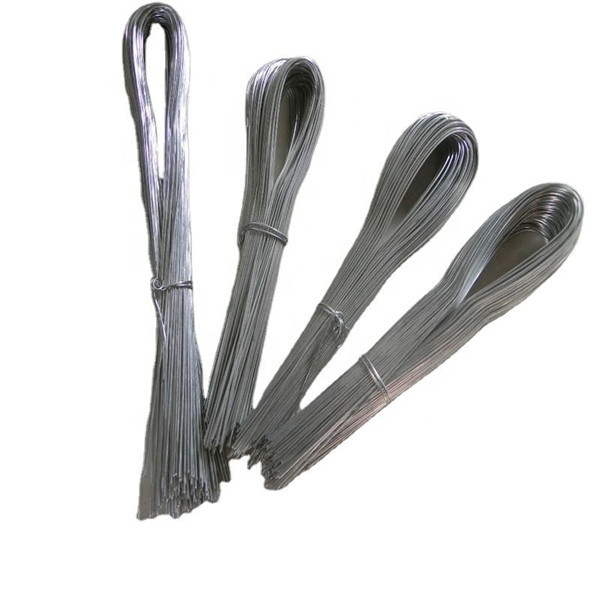
U shape cutting wire is essential for fast rebar tying in construction.
Customized Solutions for Diverse Needs
Recognizing that standard products may not always meet the unique requirements of every B2B client, leading manufacturers of U Type Tie Wire offer comprehensive customization options. This flexibility ensures that businesses can procure binding solutions precisely tailored to their specific operational contexts and technical specifications.
Customization Parameters Include:
- Wire Gauge (Diameter): Clients can specify the exact wire gauge, ranging from finer wires for lighter applications (e.g., 22 gauge for garden ties) to heavier gauges for demanding tasks (e.g., 16 gauge for rebar tying).
- Cut Length: The length of the u shaped wire can be customized to suit specific tying circumference requirements, minimizing waste and maximizing efficiency. Common lengths are 8-24 inches (200-600mm), but bespoke lengths are available.
- Material and Coating Type: Options include black annealed wire for maximum flexibility, electro-galvanized for basic corrosion resistance, hot-dip galvanized for superior long-term protection, and PVC coated for added durability, color-coding, or gentle handling.
- Packaging Configurations: Custom packaging options, such as specific piece counts per bundle (e.g., 1000, 2500, 5000), specific bundle weights, or specialized wrapping for protection against environmental factors, can be accommodated to streamline logistics and inventory management.
- Tensile Strength and Elongation: For applications with specific mechanical property requirements, manufacturers can adjust the wire drawing and annealing processes to achieve desired tensile strength and elongation characteristics, crucial for performance in automated systems or high-stress environments.
This commitment to customized solutions empowers businesses to optimize their operations by deploying binding wire that is perfectly matched to their machinery, processes, and environmental conditions, driving both efficiency and safety.
Vendor Comparison and Selection Criteria
Selecting the right supplier for U Shaped Binding Wire is a critical decision for B2B entities, impacting project timelines, material costs, and overall product quality. A comprehensive evaluation of potential vendors based on several key criteria is essential.
Key Comparison Factors:
- Material Quality and Sourcing: Investigate the raw material quality (e.g., origin of steel, certifications like ISO 9001 for consistency).
- Manufacturing Precision: Assess the vendor's capabilities in maintaining tight tolerances for wire gauge, cut length, and bend accuracy. Automated, CNC-driven processes typically indicate higher precision.
- Certifications and Compliance: Verify product certifications (e.g., ASTM standards for galvanized coatings, ISO for quality management) and adherence to industry-specific regulations.
- Customization Capabilities: A vendor's ability to provide tailored solutions for gauge, length, and coating types can be a significant advantage.
- Lead Time and Fulfillment Reliability: Evaluate past performance on delivery schedules, especially for large or recurring orders.
- Pricing Structure and Value: Compare not just the unit price, but the total cost of ownership including delivery, quality, and potential for reduced labor due to superior product design.
- Customer Support and After-Sales Service: Assess the responsiveness and effectiveness of technical support, warranty provisions, and problem-solving capabilities.
Vendor Comparison Table (Illustrative)
| Feature/Criterion | Vendor A (Premium) | Vendor B (Standard) | Vendor C (Budget) |
|---|---|---|---|
| Certifications | ISO 9001, ASTM A641 | ISO 9001 | Basic internal QC |
| Customization (Gauge, Length, Coating) | Extensive (full range) | Moderate (common sizes) | Limited (standard sizes only) |
| Lead Time (Typical) | 7-14 business days | 14-21 business days | 21-30+ business days |
| Corrosion Resistance (Galvanized) | Excellent (Heavy zinc coat) | Good (Standard zinc coat) | Moderate (Light zinc coat) |
| Price Point | Higher | Medium | Lower |
By carefully weighing these factors, businesses can choose a vendor that aligns with their quality requirements, budget constraints, and operational timelines for supplying reliable u shaped wire.

A comparative analysis of u shaped wire suppliers is crucial for optimal procurement.
Real-World Application Case Studies
These case studies illustrate the tangible benefits and practical applications of U Shaped Binding Wire in diverse industrial settings, showcasing its efficacy and the value it adds to B2B operations.
Case Study 1: High-Rise Residential Construction Project
Client: Major Urban Development Firm
Challenge: A large-scale residential tower project required rapid and consistent tying of rebar cages across multiple floors, with stringent quality and safety standards. Traditional cut-and-tie methods with straight wire were proving too time-consuming and labor-intensive, delaying the concrete pouring schedule.
Solution: The firm transitioned to pre-cut 16-gauge galvanized u shaped wire, supplied in 2500-piece bundles. This allowed for immediate application using manual and semi-automatic tying tools, eliminating the need for on-site wire cutting.
Results: The adoption of U Type Tie Wire led to a 30% reduction in rebar tying labor hours per floor. Project completion time for the structural phase was accelerated by two weeks, directly impacting overall project profitability. The galvanized coating ensured long-term corrosion resistance for the embedded steel, meeting the structural integrity requirements for a building designed for a 50+ year lifespan.
Case Study 2: Commercial Agricultural Baling Operation
Client: Large-scale Hay Producer in a Humid Region
Challenge: The client needed an efficient and weather-resistant solution for baling thousands of tons of hay annually. Standard black annealed bale ties were prone to rust and premature failure in the humid environment, leading to bale disintegration and product loss during storage and transport.
Solution: The producer implemented 14-gauge hot-dip galvanized u shaped wire for all baling operations. The heavier zinc coating provided superior protection against moisture and environmental corrosion.
Results: The use of galvanized U Type Wire resulted in a nearly 90% reduction in bale breakages attributed to wire failure, significantly minimizing product loss. The ease of use of the pre-bent wire also allowed for faster baling cycles, improving overall harvest efficiency. The initial higher cost of galvanized wire was quickly offset by reduced material waste and improved product integrity for market delivery.
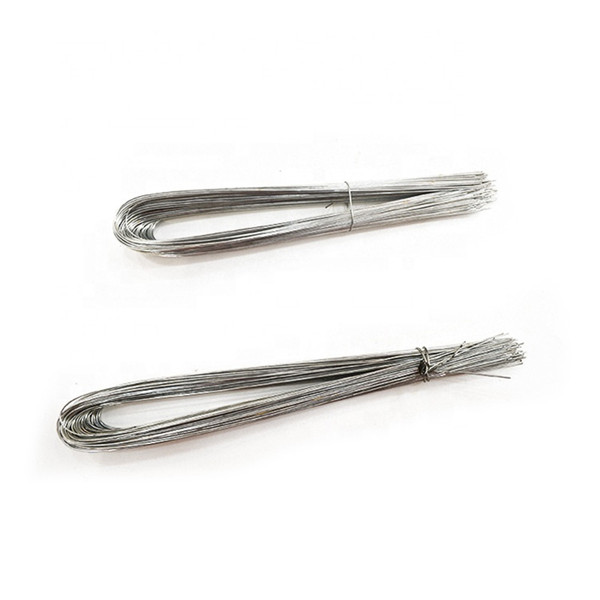
U type wire offers durability and efficiency in various industrial environments.
Ensuring Trust: Certifications, Warranty, and Support
In the B2B landscape, trust is paramount. Reputable manufacturers of U Shaped Binding Wire understand this, offering robust assurances through certifications, clear warranty policies, efficient lead times, and comprehensive customer support. These elements collectively build confidence and solidify long-term partnerships.
Authoritativeness through Certifications:
- ISO 9001:2015 Certification: This internationally recognized standard demonstrates a commitment to quality management systems, ensuring consistent product quality from raw material sourcing to final delivery.
- Material Test Certificates (MTCs): Batch-specific MTCs are provided, detailing the chemical composition and mechanical properties (tensile strength, elongation) of the wire, ensuring traceability and verifiable compliance with specifications.
- ASTM/BS/DIN Compliance: Products adhere to relevant international standards for wire and coatings, such as ASTM A641 for galvanized coatings, ensuring performance and durability.
- Strategic Partnerships: Collaborations with established clients and a proven track record of serving critical industries over many years (e.g., 20+ years in wire mesh and binding wire manufacturing) underscore market authority.
Trustworthiness in Operations:
- Lead Time & Fulfillment: Standard lead times for common specifications are typically 7-14 business days, with expedited options available for urgent orders. For customized or large-volume orders, a precise lead time is provided at the quotation stage, ensuring transparency and reliable planning. Efficient logistics partners ensure timely and secure delivery.
- Warranty Commitments: A standard warranty of 1-3 years is offered against manufacturing defects and premature corrosion (for coated products under normal conditions). Specific warranty details are outlined in sales agreements, providing clients with peace of mind.
- Customer Support: Dedicated account managers and technical support teams are available to assist with product selection, technical inquiries, order tracking, and after-sales service. Support is accessible via phone, email, and online portals, ensuring prompt and expert assistance.
This holistic approach to quality, reliability, and support ensures that clients receive not just a product, but a complete solution backed by expertise and integrity. The commitment to authoritative standards and trustworthy service reflects a deep understanding of B2B needs.
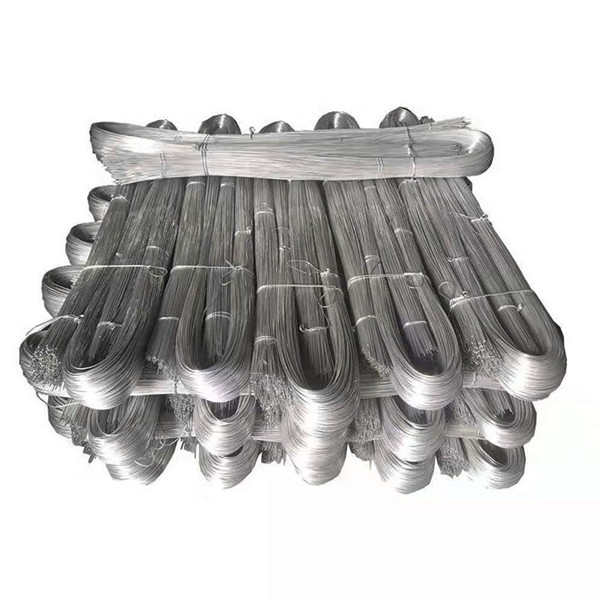
Reliable baling wire is essential for agricultural and industrial packaging.
Frequently Asked Questions (FAQ)
Q1: What is the primary advantage of U Shaped Binding Wire over straight binding wire?
A1: The primary advantage is significantly increased efficiency. The pre-bent 'U' shape allows for much faster tying, especially in repetitive tasks like rebar tying or baling, reducing labor costs and accelerating project timelines. It also eliminates the need for on-site wire cutting, reducing waste and improving safety.
Q2: What materials are commonly used for U Type Tie Wire, and how do they differ?
A2: U Type Tie Wire is commonly made from low carbon steel wire. Variations include:
- Black Annealed Wire: Soft, highly flexible, and economical. Ideal for applications where corrosion is not a major concern or when the wire is embedded in concrete.
- Electro Galvanized Wire: Offers a basic level of corrosion resistance due to its zinc coating. Suitable for mildly corrosive environments.
- Hot-Dip Galvanized Wire: Provides superior, long-lasting corrosion resistance with a thicker zinc coating. Recommended for outdoor, humid, or harsh environments.
- PVC Coated Wire: Encased in a plastic coating, offering excellent corrosion and abrasion resistance, UV protection, and often available in colors for aesthetic or coding purposes. It's also softer to handle.
Q3: Can U Shaped Wire be customized for specific project requirements?
A3: Yes, leading manufacturers offer extensive customization. This includes specifying wire gauge (diameter), cut length, choice of material and coating (black annealed, galvanized, PVC coated), tensile strength, and packaging configurations to perfectly match your application and operational needs.
Q4: What testing standards should I look for when sourcing U Shaped Binding Wire?
A4: Look for suppliers who adhere to international quality management standards like ISO 9001. For the wire itself, relevant material standards include ASTM A641 for galvanized wire, ensuring specified zinc coating weights and adherence to mechanical properties. Material Test Certificates (MTCs) should also be available for each batch.
Q5: What are the typical lead times for U Type Binding Wire orders?
A5: For standard specifications and quantities, lead times typically range from 7 to 14 business days. Customized or very large orders may require longer, with specific timelines provided upon quotation. Reputable suppliers prioritize efficient order fulfillment and communicate clearly about delivery schedules.
Conclusion
The U Shaped Binding Wire, or U Type Tie Wire, represents a critical innovation in industrial binding solutions. Its engineered design offers unparalleled efficiency, durability, and versatility, making it an indispensable component across sectors ranging from construction and agriculture to packaging and logistics. The continuous evolution of manufacturing processes, coupled with stringent quality control and the availability of customized solutions, ensures that this specialized wire meets the complex demands of modern B2B applications.
By understanding the technical specifications, embracing tailored solutions, and partnering with authoritative, trustworthy vendors, businesses can leverage the inherent advantages of u shaped wire to optimize operations, reduce costs, and enhance the longevity and integrity of their projects. As industries continue to seek more efficient and reliable materials, the U Shaped Binding Wire remains a cornerstone product, driving progress and delivering tangible value.
References
- ASTM International. (2017). ASTM A641/A641M-17: Standard Specification for Zinc–Coated (Galvanized) Carbon Steel Wire. ASTM International.
- International Organization for Standardization. (2015). ISO 9001:2015: Quality management systems — Requirements. ISO.
- The World Steel Association. (2023). Steel Data & Statistics. World Steel Association.



